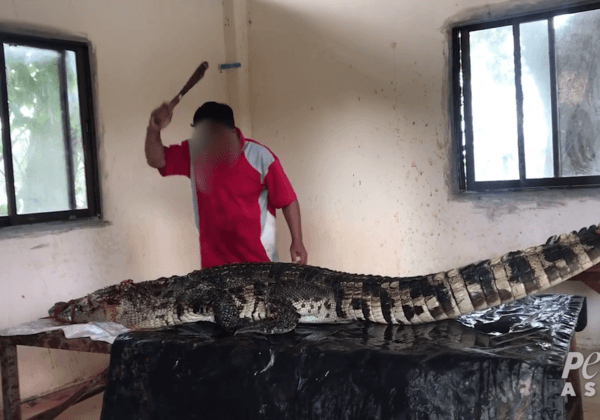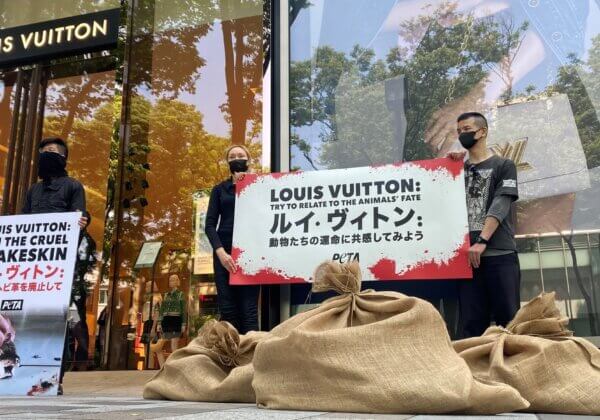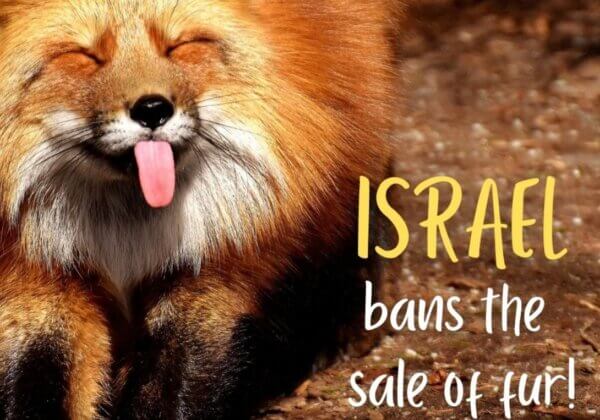A Look Inside the Angora Industry
Angora wool, used in sweaters and accessories, comes from angora rabbits with extremely soft, thick coats. A PETA Asia undercover investigation of rabbit farms in China—the source of 90 percent of the world’s angora—found rabbits screaming in pain and terror as workers ripped the fur out of their skin. Following this barbaric ordeal, they lie motionless inside tiny, filthy cages, stunned and in shock. Some seem unable to move.
Rabbits who are sheared also suffer. They have their feet tightly tethered, and they are suspended in the air or stretched across boards—a terrifying experience for a prey animal. The sharp cutting tools inevitably wound them as they struggle desperately to escape.
In China, there are no penalties for animal abuse on rabbit farms, and no standards to regulate the treatment of animals.
How Humane are ‘Humane’ Angora Farms in China?
In nature, these sensitive animals would live in elaborate underground warrens and enjoy playing and spending time with other rabbits. On a typical angora farm, they are housed alone in wire-mesh cages. When forced to live on wire flooring, rabbits’ tender feet become raw and ulcerated from constantly rubbing against the wire. They are denied solid flooring, bedding and the vital companionship of other rabbits.
Female rabbits produce more wool than do males, so on larger farms, male rabbits who are not destined to be breeders are killed at birth. They could be considered the “lucky” ones.
Angora rabbits are subjected to the terrifying ordeal of being plucked or sheared every few months. After two to five years, those who have survived this repeated abuse have their throats slit, and then they’re skinned.
Compassion is the fashion! Pledge to keep angora out of your wardrobe and choose from the many warm and stylish cruelty-free materials available today. If the label says “angora,” leave the item on the rack.










